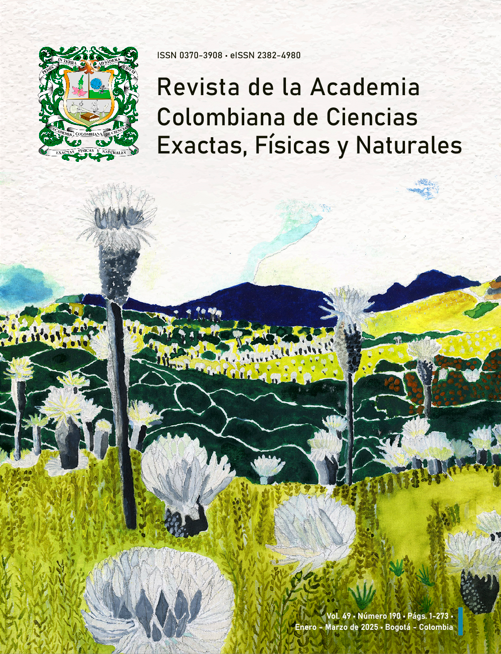Abstract
The presence of wild hippopotamuses (Hippopotamus amphibius) in Colombia due to the establishment of Pablo Escobar’s private zoo in the 1980s has led to tourism activities centered on this non-native megafauna. Here, I argue that promoting hippo-based tourism in Colombia is ecologically detrimental, potentially dangerous, and, ultimately, unsustainable. Furthermore, I contend that the economic benefits of such tourism go to a few inexperienced operators and provide minimal economic spillover to local communities. The article proposes alternative strategies,including the creation of a museum dedicated to educating the public about the relationship between drug trafficking, illegal wildlife trade, and invasive species to mitigate the perceived economic los from discontinuing hippo tourism. I conclude that this type of tourism may seem economically attractive in the short term but its risks and challenges far outweigh any potential benefits, calling for a more responsible, science-based approach to managing this unique conservation challenge.
References
Caicedo, D. F. (2023). Narcos and the cocaine hippos dark-eco tourism perspectives. Journal of Tourism and Heritage Research, 6(3), 259-279.
Castelblanco-Martínez, D. N. (2021). Gorgeous villains: When the charisma plays against effective conservation strategies. Mammalogy Notes, 8(1), 129-132. https://doi.org/10.47603/manovol8n1.129-132
Castelblanco-Martínez, D. N., Moreno-Arias, R. A., Velasco, J. A., Moreno-Bernal, J. W., Restrepo, S., Noguera-Urbano, E. A., Baptiste, M. P., García-Loaiza, L. M., Jiménez, G. (2021). A hippo in the room: Predicting the persistence and dispersion of an invasive megavertebrate in Colombia, South America. Biological Conservation, 253, 108923. https://doi.org/10.1016/j.biocon.2020.108923
El Espectador (2024). Las críticas al Sena por fomentar el turismo de hipopótamos. https://www.elespectador.com/ambiente/las-criticas-al-sena-por-fomentar-el-turismo-de-hipopotamos/
Gall, C. y Cummins, J. (2024). ‘I don’t hate hippos despite one attacking me’. BBC News. https://www.bbc.com/news/uk-england-coventry-warwickshire-66911234
Jiménez, G., Santamaría-Castiblanco, D., Subalusky, A., Anderson, E. (2024). Breve recuento histórico y una reflexión sobre los hipopótamos del Magdalena Medio colombiano. Revista de la Academia Colombiana de Ciencias Exactas, Físicas y Naturales, 48(187), 397-400. https://doi.org/10.18257/raccefyn.2663
Kendall, C. J. (2011). The spatial and agricultural basis of crop raiding by the vulnerable common hippopotamus Hippopotamus amphibius around Ruaha National Park, Tanzania. Oryx, 45(1), 28-34. https://doi.org/10.1017/S0030605310000359
Ministerio de Ambiente y Desarrollo Sostenible (Minambiente) (2022). Resolución No. 0346 de 2022. Por la cual se modifica el artículo 1° de la Resolución No. 848 de 2008, adicionando la especie Hippopotamus amphibius (Hipopótamo común) y se toman otras determinaciones.Diario Oficial.
Ministerio de Ambiente y Desarrollo Sostenible (Minambiente) (2024). Plan para la prevención, control y manejo de la especie exótica invasora hipopótamo (Hippopotamus amphibius). https://www.minambiente.gov.co/wp-content/uploads/2024/07/PLAN-PARLA-LAPREVENCION-MANEJO-Y-CONTROL-DE-HIPOPOTAMOS.pdf
Ministerio de Comercio, Industria y Turismo (MinCIT). (2020). Política de turismo sostenible: Unidos por la naturaleza. https://www.mincit.gov.co/minturismo/calidad-y-desarrollosostenible/politicas-del-sector-turismo/politica-de-turismo-sostenible/resumen-ejecutivopolitica-de-turismo-sostenible.aspx
Ministerio de Comercio, Industria y Turismo (MinCIT). (2024). Informe de gestión 2023. https://www.mintic.gov.co/portal/715/articles-334075_recurso_1.pdf
Monsalve, S. y Ramírez, A. (2018). Estado actual de los hipopótamos (Hippopotamus amphibius) en Colombia: 2018. CES Medicina Veterinaria y Zootecnia, 13(3), 338-346. https://doi.org/10.21615/cesmvz.13.3.4
Moreno-Arias, R. (2024). Reflexiones sobre el manejo de la invasión de hipopótamos en Colombia: deber, virtud y consecuencias. Revista de la Academia Colombiana de Ciencias Exactas, Físicas y Naturales, 48(187), 401-403. https://doi.org/10.18257/raccefyn.2662
Moreno-Arias, R., Nova-León, L. J., García-Loaiza, L. M., Baptiste, M. P., Montenegro-Díaz, O. L., López Arévalo, H. F., Loaiza, C., Santamaría-Castiblanco, D., Diaz-Rodríguez, G.(2024). Un megaherbívoro invasor al descubierto: ecología de la población de hipopótamos (Hippopotamus amphibius) en Colombia. Revista de la Academia Colombiana de Ciencias Exactas, Físicas y Naturales, 48(188), 564-581. https://doi.org/10.18257/raccefyn.2647
Pachón, D. M. (2021). El problema sigue creciendo: hipopótamos a la venta en Colombia. Mongabay Latam. https://es.mongabay.com/2021/11/colombia-trafico-ilegal-hipopotamospablo-escobar/
Ramírez-Chaves, H.E., Roncancio-Duque, N., Morales-Martínez, D.M. (2024). Los hipopótamos introducidos en Colombia: una oportunidad para los estudios biológicos y la educación ambiental. Revista de la Academia Colombiana de Ciencias Exactas, Físicas y Naturales, 48(187), 404-406. https://doi.org/10.18257/raccefyn.2643
Shurin, J. B., Aranguren-Riaño, N., Duque, D., Echeverri, D., Jones, N. T., Laverde-R, O., Neu, A., Pedroza, A. (2020). Ecosystem effects of the world’s largest invasive animal. Ecology, 101(5), e02991. https://doi.org/10.1002/ecy.2991
Subalusky, A. L., Anderson, E. P., Jiménez, G., Post, D. M., Lopez, D. E., García-R., S., Nova León, L. J., Reátiga Parrish, J. F., Rojas, A., Solari, S., Jiménez-Segura, L. F. (2021). Potential ecological and socio-economic effects of a novel megaherbivore introduction: the hippopotamus in Colombia. Oryx, 55(1), 105-113. https://doi.org/10.1017/S0030605318001588
Subalusky, A. L., Sethi, S. A., Anderson, E. P., Jiménez, G., Echeverri-López, D., García-Restrepo, S., Nova-León, L. J., Reátiga-Parrish, J. F., Post, D. M., Rojas, A. (2023). Rapid population growth and high management costs have created a narrow window for control of introduced hippos in Colombia. Scientific Reports, 13, Article 6193. https://doi.org/10.1038/s41598-023-33028-y
Tamayo, C. A., Morales, X., Benavides, S. (2024). El diagnóstico del turismo de naturaleza en el Magdalena caldense (Caldas, Colombia) como una oportunidad de desarrollo comunitario. Turismo y Sociedad, 35, 49-69.

This work is licensed under a Creative Commons Attribution-NonCommercial-NoDerivatives 4.0 International License.
Copyright (c) 2024 Revista de la Academia Colombiana de Ciencias Exactas, Físicas y Naturales

